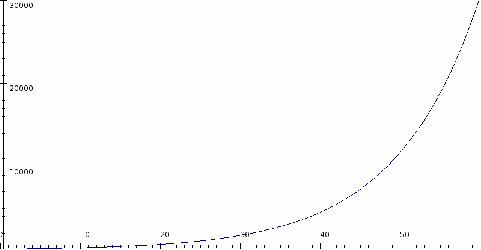People who form the healthy habit of saving money pretty soon find themselves rich. This is because money by itself earns interest, so that you do not need to put money in the bank to save – you can just leave the money there and it will grow all by itself, ignoring the very real possibility of a bank going bankrupt.
Suppose then that you put £100 in a bank at 10% interest. This means that the amount of money in the bank increases by 10% each year.
The amount at the end of the 1 st year is £100 +10% of £100 =£100 +£10=£110
The amount at the end of the 2 nd year is £110 +10% of £110 =£110 +£11=£121
The amount at the end of the 3 rd year is £121 +10% of £121 =£121 +£12.1=£133.1
The amount of money in the account each year is shown on the graph below.

There is a formula to find the amount of money,![]() in the bank at the end of each year, after interest has been added:
in the bank at the end of each year, after interest has been added:
![]()
In this formula,![]() is the original amount invested – the Principle.
is the original amount invested – the Principle.
![]() is the rate of interest
is the rate of interest
![]() is the number of years since the investment was made.
is the number of years since the investment was made.
For this example, the amount of money in the account at the end of the 20 th year is
![]()
